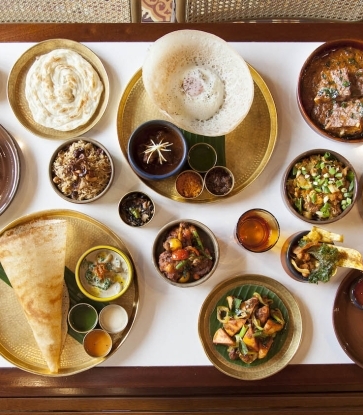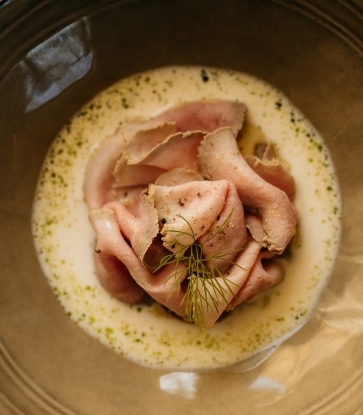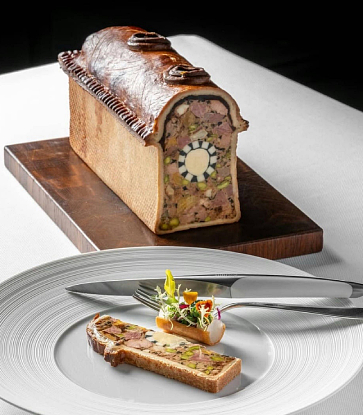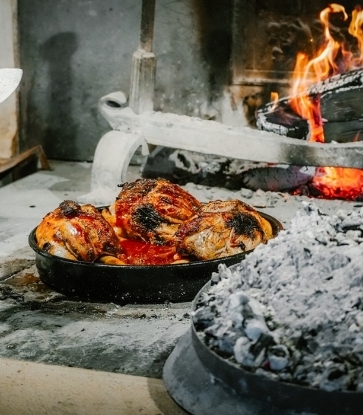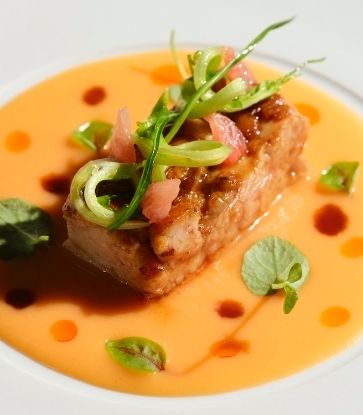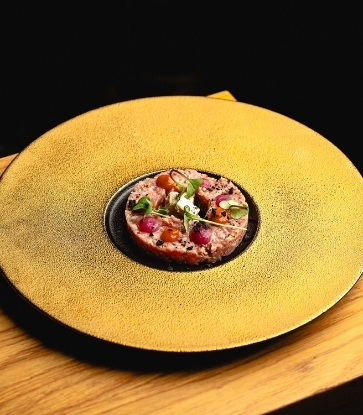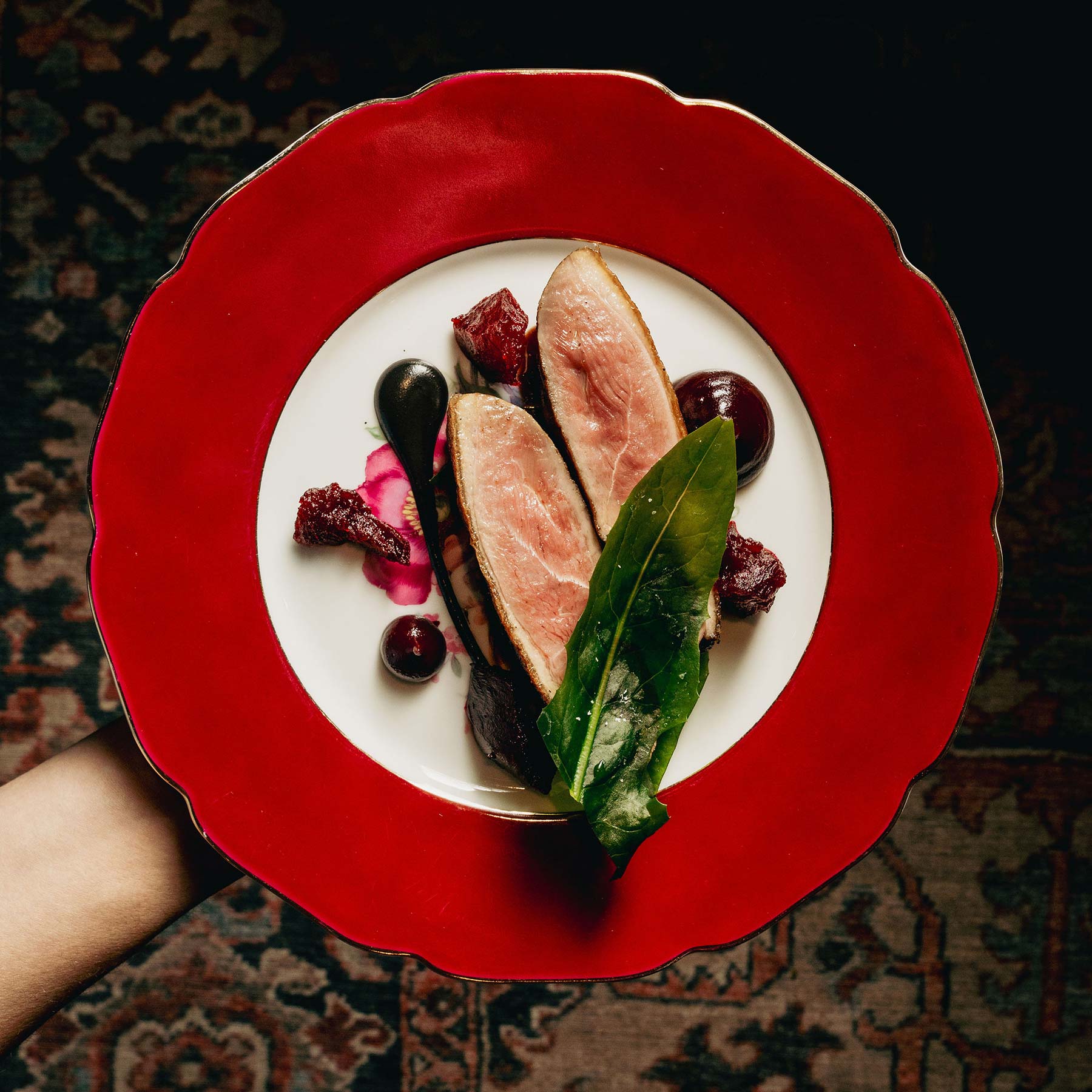There’s a quiet thrill to entering a fine dining establishment and unfolding its menu.
After all, the entire experience is not all just about what’s on the plate. It’s about anticipation and theatre, intuition and trust. The soft rustle of a starched napkin, the clink of fine cutlery, the subtle glance toward a sommelier — it all sets the stage for an event that can be sublime, bewildering, or, on the best days, a bit of both.
To help decode the rituals and choices that come with a high-end meal, we asked our MICHELIN Guide Inspectors — who’ve obviously eaten their way through more tasting menus than most of us will in a lifetime — to share how they approach the fine dining experience. From choosing between wine pairings and rare bottles, to deciding whether a supplement is worth the splurge, their answers offer a rare glimpse into how the experts dine when no one’s watching.
1. Making the First Move: How to Choose Your Menu
The first fork in the road comes before you even lift one. Before the first bite, there are already a few decisions to be made: for some restaurants, would you do an à la carte or tasting — and if it’s the latter, do you opt for the shorter or longer menu? Some days call for a quick waltz through a few courses; others feel made for the full symphony. It all comes down to appetite, mood, and how much of the experience you’re ready to dive into.
“Our job is to eat what best expresses the chef’s personality,” one inspector shares. “We usually start by comparing the à la carte with the tasting menu to see if there is a high degree of overlap in dishes and corresponding prices. If the tasting menu includes something unique and emblematic of the chef’s style, we usually go for that. But sometimes the à la carte has the gems.”
And when it comes to length? Flexibility is the magic word. “Some days I’m ravenous; other times, less so,” one inspector admits, with a plea for chefs to offer options. Others assess how well the restaurant handles flow and flavour across courses. A shorter menu might keep things tight and bright, while a longer one — when handled with care — can deliver the full arc of a chef’s imagination. Either way, it’s about leaving the table satisfied and not overwhelmed.
2. Sips That Matter: Wine, Pairings, and the Sommelier's Role
A good drink can elevate a meal; the right one can rewrite it entirely. Whether you're eyeing a bottle, testing the sommelier’s instincts, or going booze-free with something botanical and clever, what’s in your glass should tell its own story — ideally one that complements what’s on the plate, not competes with it.
There’s no one-size-fits-all when choosing the right beverage. Some treat drink pairings like a collaboration. “We always start with a conversation,” says one of the inspectors, “and judge the sommelier based on their ability to enhance the food, not just pour a good glass.”
Others keep things fluid, swapping full pairings for two or three tailored pours. “I’ll often ask the sommelier to pick just a couple of wines that stretch across multiple courses. A good sommelier loves the challenge.”
As for how to get the most out of that interaction? Clarity, curiosity, and kindness go a long way. “Don’t be afraid to point out your budget or say what you usually enjoy,” one inspector advises. “If you show interest, they’ll likely open up and bring out something unexpected.” Another puts it simply: “Tell them what you like — tea, cocktails, sour, sweet — give them a flavour map to work with.” Because when the sommelier knows where you’re coming from, they’re far more likely to take you somewhere unforgettable.

3. The Art of Pacing and Personalisation
Fine dining may be indulgent, but it’s no sprint. When the courses start stacking up and the supplements come calling — caviar here, signature there — it helps to know when to go all in and when to politely decline. With multiple courses, tempting supplements, and timing to consider, the experience hinges on how you navigate each offer.
“Beware the bread basket,” one inspector warns. “That’s the greatest threat for me.” Many skip breakfast or keep bites small throughout the meal to preserve appetite. Others adjust the tempo. “If things are moving too fast, I ask the kitchen to slow it down. A good restaurant will understand,” shares an inspector.
When supplements beckon — whether it’s the house caviar or a chef’s signature — it’s worth taking a breath to think. “If it’s a once-in-a-lifetime visit, you might not want to miss it,” one inspector reasons. “But it could also tip the whole meal into overload,” says another. The best advice? Ask. If the dish genuinely represents the chef’s voice and adds something memorable, go for it. If it’s just truffle and a markup, you’re better off saving room. It’s not about being stingy or indulgent — it’s about being intentional. The most memorable meals, after all, aren’t measured by how much you ordered, but how well it all held together from start to finish.
4. To Splurge or Not to Splurge: When Dining Gets Deluxe (and Collaborative)
Luxury on a plate carries more than just a price tag — it’s a statement. Whether it’s premium ingredients or a globe-trotting guest chef in the kitchen, these flourishes can feel magical… or maddening. The question is: are they indeed worth it? That depends on what you’re really here for — flavour, flair, or just the thrill of saying you tried it.
Some ingredients arrive with reputations larger than their flavour. Products such as caviar, truffles, and uni — often whispered about as if they hold the keys to culinary nirvana. But are they worth the premium?
“These ingredients are highly overused,” one inspector expresses. “If they don’t harmonise with the dish, we don’t bother.” However, the others view them as situational splurges — justifiable for romantic dinners or milestone moments, less so over a business lunch. “It’s an extra treat, at an extra price,” says one inspector, “and if you’re not into it, don’t feel pressured. A good dish shouldn’t need the extra bells and whistles.”
As for four-hands dinners? Opinions vary. “They’re not always a success,” cautions an inspector. "But when both chefs truly collaborate, rather than recycling old hits, the results can be extraordinary.” For some, it’s a shortcut to tasting an acclaimed chef’s work without hopping on a plane. For others, it’s a special event meant for insiders and diehards, not first-timers. “If both chefs are hard to book on their own,” one inspector notes, “then yes — worth every cent. Otherwise, ask yourself if you’re here for the food or the fanfare.”
5. Special Menus — Seasonal, Themed, and Limited-Time
Perhaps, limited-time menus are comparable to fireworks: fleeting, dramatic, and designed to impress. Whether it’s a seasonal showcase or a deep-dive into a single ingredient, these menus promise something off-script — sometimes thrilling, sometimes forgettable. The trick is knowing when to embrace it, and when to stick with the classics.
Seasonal menus work best when grounded in produce and creativity that push the kitchen to think differently. “They’re a challenge,” says one inspector. “Not only do they require sourcing fresh ingredients, but they also demand creative testing to blend them into the restaurant’s style.” Still, most tend to rely on instinct. “I don’t have a fixed rule,” another admits. “It’s a pleasure to read both menus and decide based on the moment.”
Themed menus built around a single ingredient — lobster, truffle, and hairy crab, for example — tend to divide opinion. For some, it’s a fascinating way to explore a chef’s range. “It’s about seeing the kitchen push its boundaries,” one inspector says. For others, the appeal fades fast.
“Single-ingredient menus aren’t my favourite,” confesses an inspector. “I like diversity.” And that’s the rub — while a well-executed concept can add depth and novelty, too much of one thing often narrows the flavour range. As always, the decision rests on balance, price, and — most importantly — what you’re in the mood for.
6. The Power of Place — Seating and Setting
Where you sit can change the entire tone of a meal — from the pace of service to the emotional temperature. The chef’s counter might give you front-row theatre, while a quiet corner offers intimacy and reflection. It's not just about comfort — it's about the kind of night you're hoping to have, setting the tone for the entire experience.
"When dining alone, I’ll choose the chef’s counter,” says one inspector. “It’s a good opportunity to observe the kitchen and connect with the team.” However, it’s not for everyone. “Some prefer intimacy and wouldn't want to engage with the chefs — and that’s fine. You’re not obliged to accept the first table you’re given.”
For those dining in pairs or groups, privacy often wins out. “If I’m with a guest, I’ll opt for a quiet table. And with a group? Always the dining room — no one wants to sit in a row and shout over foie gras.” Ultimately, it comes down to mood, company, and how close you want to be to the action — or how far away.

7. Midday Magic — Is Fine Dining Different at Lunch?
Lunch often plays second fiddle to dinner in the fine dining world — but should it? With shorter menus, gentler lighting, and a less performative pace, lunch can actually make for a surprisingly rich experience.
“Some of my greatest restaurant experiences were at lunchtime,” one inspector recalls. “My companion and I had such a wonderful meal that we came back for dinner and then debated for years which was better.” Others agree: while lunch menus are often simpler and less showy, they can still deliver joy, especially for first-timers or time-pressed diners looking for a smart entry point.
That said, the occasion still matters. “If you're celebrating or in search of romance,” another inspector notes, “dinner might carry more weight.” But daylight has its own kind of magic — especially when paired with a well-composed plate and, perhaps, a view worth lingering over.

8. What Stays With You — Return Visits and Lasting Impressions
What makes a meal unforgettable enough to make you want to return? Not just flawless technique, but that ineffable moment where everything aligns — a perfectly timed course, a thoughtful gesture, a dish that lingers in memory. A sense that someone, somewhere in the kitchen, was cooking not just with precision, but with meaning.
“A great dining experience excites and surprises,” one inspector says. “It evokes memory, uses the finest ingredients, and surrounds you with service that’s warm, seamless, and deeply attentive.” For others, it’s the rare alignment of food, ambiance, and even the people you’re with. “If I’m not comfortable at my table, it’s much harder for the chef to fascinate me.”
As for what brings diners back — it’s consistency, yes, but also curiosity. “If I find myself thinking, ‘I can’t wait to see what they do next,’ that’s the sign of a place evolving,” says one inspector. Another puts it simply: “I wouldn’t return for the same tasting menu. But if the second meal is better than the first? That’s when I know I’ve found my place.” Evolution matters. It doesn’t need to be dramatic. A new wine, a reworked dish, a spark of ambition behind the pass — that’s what keeps people coming back for more.
9. For the Curious and the Cautious — Advice for Newcomers on Where to Choose a Fine Dining Spot and More
Fine dining doesn’t have to be intimidating. Sure, the menus might read like poetry, and the chairs and lighting fixtures might cost more than a month's rent, but at its heart, a great meal is about generosity and pleasure. So where should newcomers begin? With curiosity, a bit of research — and a healthy appetite.
The best advice from our inspectors? Start where you’re comfortable. “Choose a cuisine you already enjoy, and go from there,” one inspector suggests. A shorter menu at a one-MICHELIN-starred restaurant can ease you in without overwhelming your palate — or your wallet. “Try it a few times. Get used to the rhythm of it. Then, when you’re ready, go bigger.”
Flashy presentations might grab your attention, but our seasoned inspectors recommend seeking out restaurants that lead with balance, craftsmanship, and great ingredients. "And if you're not sure where to start, use the MICHELIN Guide,” urges the inspectors. “Read the reviews, browse the photos, and go with your gut. That’s where the best meals begin.”
Fine dining, at its best, is a choreography of flavours, textures, aromas, sounds, and sights — designed to surprise you, seduce you, maybe even throw you slightly off balance in the best possible way.
You’re not just there to eat; you’re there to experience something that engages all five senses and lingers long after the final crumb has been swept from the table. Where you sit, what you sip, when you splurge, and how you pace yourself between the amuse-bouche and the inevitable petit four — it all adds up. You don’t need to know every grape varietal or recognise the scent of liquorice foam at fifty paces. Curiosity will take you further than expertise ever could.
So whether you're eyeing the tasting menu or flirting with the à la carte, trust your appetite, ask questions, and savour the ride. Let yourself be surprised, delighted, and maybe just a little smug about that perfect glass of wine you said yes to. Because the joy of fine dining isn’t in getting everything right — it’s in the pleasure of letting go, leaning in, and leaving with a satisfied belly, coupled with the quiet triumph of knowing you’ve done it deliciously well.
Hero Image: © Debora Szpilman / The MICHELIN Guide



